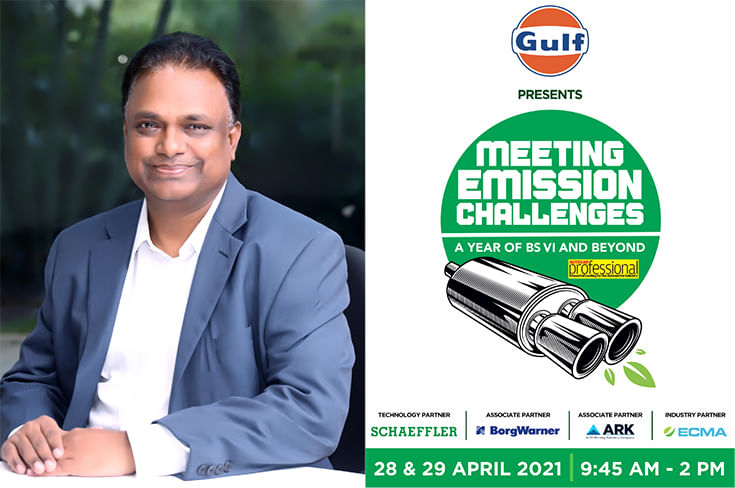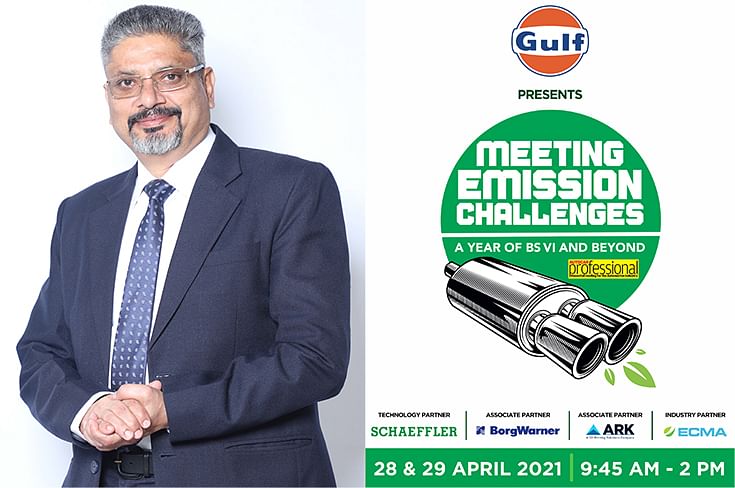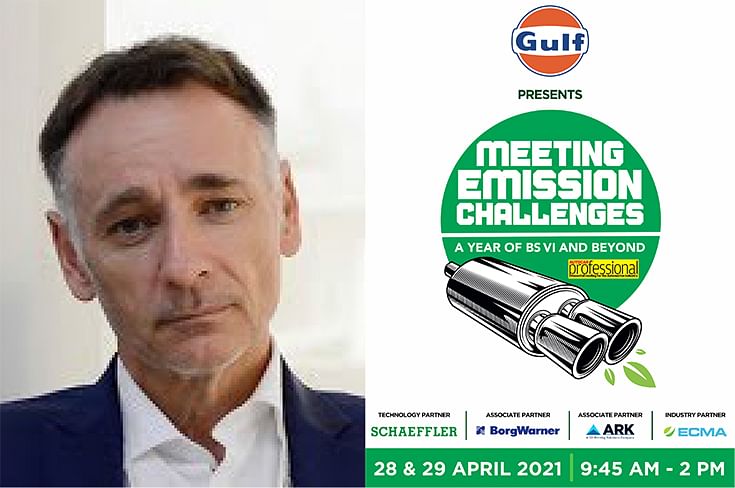Industry leaders highlight need for structured emission roadmap for India
Experts debate on how innovation is crucial to develop ‘powertrains to meet future emission norms’.
Autocar Professional’s two-day virtual conference titled ‘Meeting Emission Challenges’ focuses on the Indian auto industry’s journey after embracing BS VI a year ago. But regulations are like “milestones in a tunnel” and innovation is crucial to develop ‘powertrains to meet future norms’. This was also the topic of the second panel on day one of the two-day virtual conference.
The panel of experts and industry stakeholders included:
- R Velusamy, Chief, global product development (Automotive Division), M&M
- Gaurav Gupta, CCO, MG Motor India
- Sanjeev Saxena, President – Automotive Technologies, Schaeffler India
- Jean-Paul Roux, VP -- Sales, Simulia
R Velusamy: ‘I expect diesel to continue to play a role in the SUV & crossover segments.’

R Velusamy, Chief, global product development (Automotive Division), M&M kicked off the discussion with a broad view of the current demand dynamics in primarily the passenger vehicle segment. He explained that the, “The fuel price disparity between petrol and diesel has almost disappeared. Affordability and mileage are now the key determinants of customer preferences. I see the shift in customer preferences being driven by these two factors.”
Velusamy expects, “diesel to continue to play a role in SUV and crossover segments and sees the scope of multiple powertrains co-existing to meet the varied customer preferences.”
He believes that, “the intent of the government determines the emission regulatory roadmap.” In this context, explained how hybridisation and electrification in Europe are essentially a function of the overall political commitment in the continent targeting carbon neutrality and net zero.
The question then is what is the option for greener future? Is it electric, is it hydrogen, what is it? Velusamy pointed out that, “The reason why petrol and diesel is so successful because it is so widely available and quality across geographies at par. So, there is need is to develop one mass-market product.”
But for that he believes, “Production scale and distribution are the key factors to consider when looking at synthetic fuel or CNG or Hydrogen. We need to operationalise on day-to-day user perspective. Wide-spread availability across India is also crucial.”
Sanjeev Saxena: ‘India is going to be our global hub for two-wheeler powertrain development.’

But development of new technology is not just a function of demand and availability but cost is crucial too. Sanjeev Saxena, President – Automotive Technologies, Schaeffler India says, “Frugal technology will help manage cost factor in developing powertrain technology.”
He added that, “One-size fits all approach is unlikely to work and needs multitude of solutions to address customer demand. The auto industry is currently working on being future-ready.”
Looking at the current numbers Saxena expects, “IC engine volumes to double by 2025. A balanced approach is crucial to manage the situation. Electrification is like a long-term fixed deposit. India needs to leverage its software development capabilities.”
That is perhaps the reason why, “India is going to be the global hub for two-wheeler powertrain development. Schaeffler India continues to expand localisation initiatives, we are currently at 70 percent localisation,” added Saxena.
According to him, the issue of carbon neutrality is dependent on the fuel being used. He pointed out that, “hydrogen fuel cell technology is one of the areas where serious technology development and investment is required and Schaeffler is doing the needful. We believe Hydrogen is one of the most promising options to achieve carbon-neutrality over the long-term.”
Jean-Paul Roux: ‘Auto industry needs to innovate and develop disruptive technology.’

Jean-Paul Roux, VP – Sales (Simulia), Dassault Systemes, echoed the sentiment of the other speakers, in terms of the urgency to implement policies aimed reducing carbon dioxide drastically. He said, “Dassault System targets to reduce carbon dioxide by 40 % by 2025. Digital twin can enable reduction of 70.5 giga tonne of CO2 from now till 2030.”
But for that, he believes that the, “Auto industry needs to innovate and develop disruptive technology. Though smaller time frame, pressure of meeting quality and emission norms are exerting pressure, simulation can offer a lot of benefit to optimise the product.”
Register for Day 2 of Autocar Professional's Virtual Conference on April 29
RELATED ARTICLES
Cosmo First diversifies into paint protection film and ceramic coatings
The Aurangabad, Maharashtra-based packaging materials supplier is leveraging its competencies in plastic films and speci...
JSW MG Motor India confident of selling 1,000 M9 electric MPVs in first year
The 5.2-metre-long, seven-seater luxury electric MPV, which will be locally assembled at the Halol plant in Gujarat, wil...
Modern Automotives targets 25% CAGR in forged components by FY2031, diversifies into e-3Ws
The Tier-1 component supplier of forged components such as connecting rods, crankshafts, tie-rods, and fork bridges to l...






 28 Apr 2021
28 Apr 2021
 4744 Views
4744 Views





 Autocar Professional Bureau
Autocar Professional Bureau




